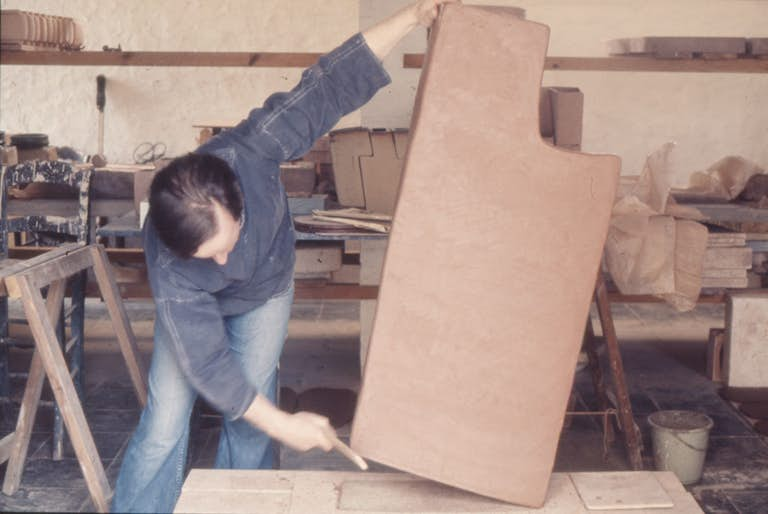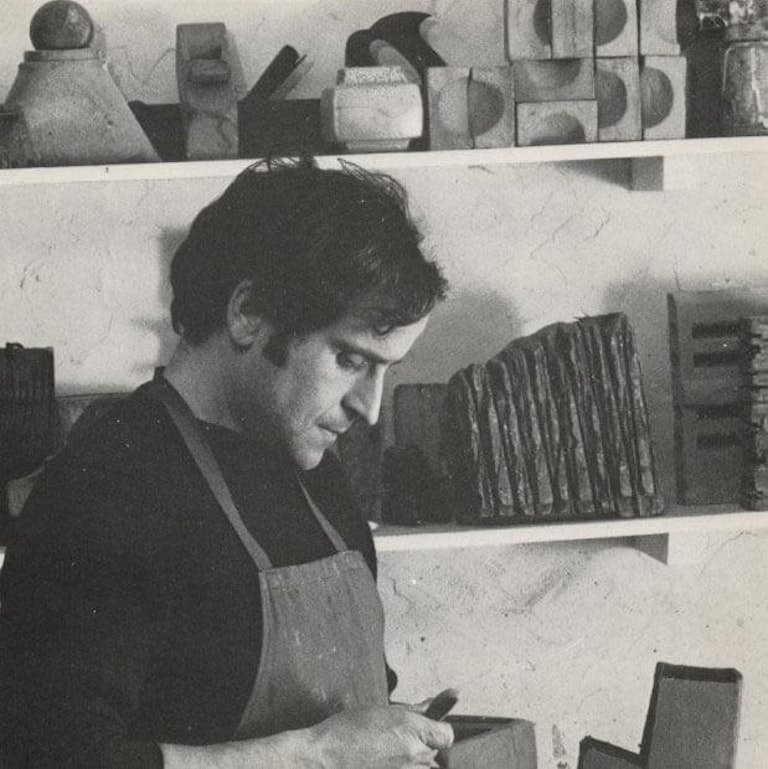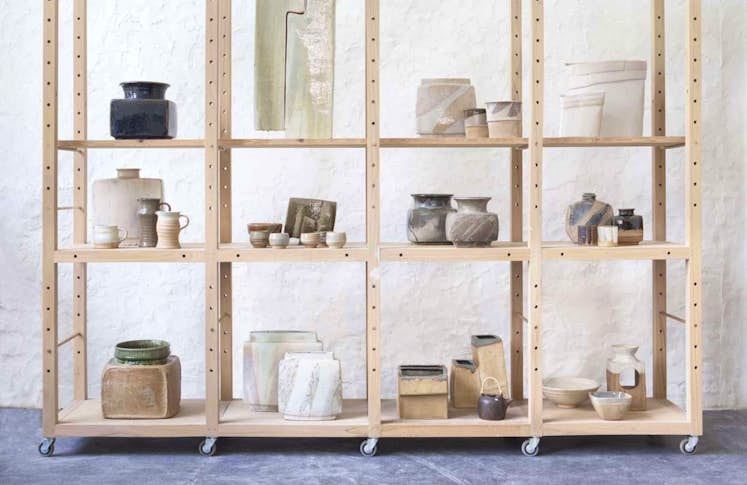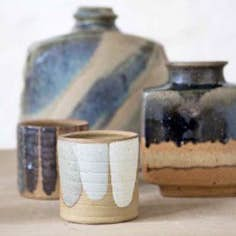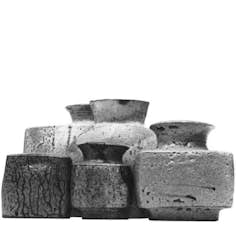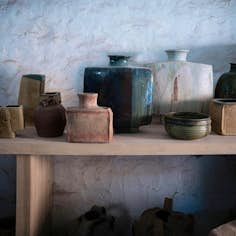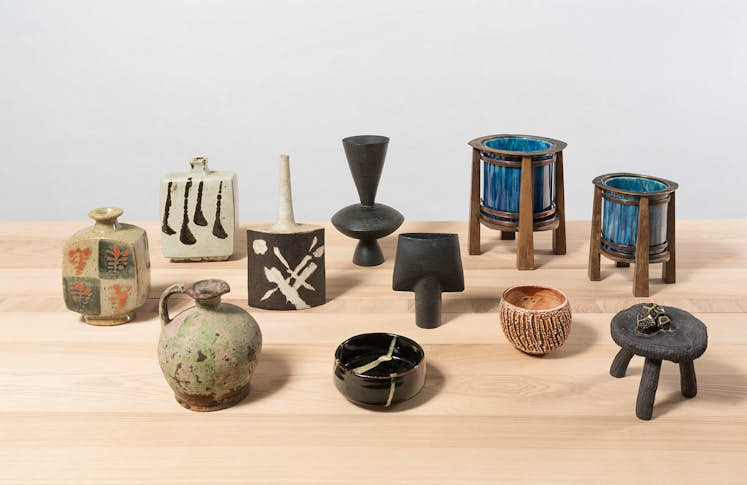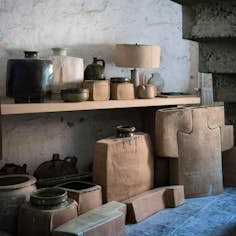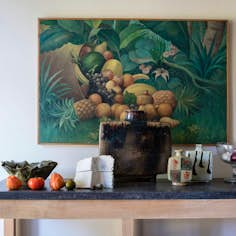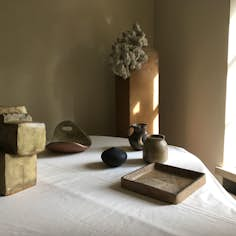the story
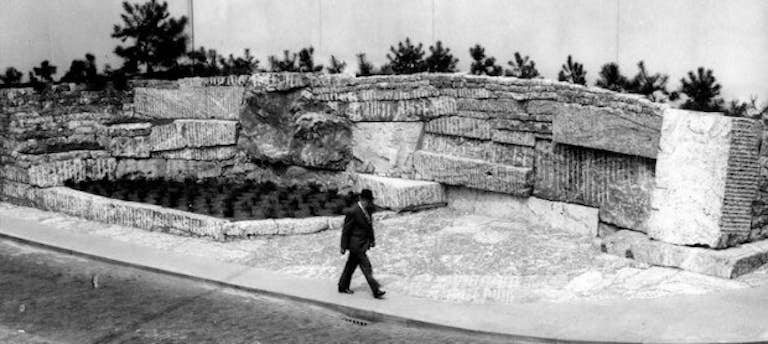
Pierre Culot grew up in Namur. From adolescence onwards, he displayed an affinity for the world of antiquity and the arts. He started his apprenticeship at the Atelier de céramique de l’abbaye de Maredsous. He continued his studies with Charles Leplae at the École nationale supérieure d’architecture et des arts décoratifs de la Cambre in Brussels. A trainee of Antoine de Vinck, a renowned post-war Belgian ceramicist, he perfected his skills with the potter Bernard Leach in Cornwall, in the United Kingdom. In 1962, he set up his first studio in Brussels and soon began a collaboration there with Sylvie and René Baucher-Feron.
Pierre Culot exhibited at the Galerie Vendôme in Brussels with the illustrator Miche Wynants, his future wife. The following year, the couple travelled to Greece, after first passing through Italy and visiting painter and engraver Giorgio Morandi in his studio. Pierre Culot went on to visit various countries in Europe and Africa, as well as Yemen and, notably, Japan—where he met the ceramicist Shoji Hamada, who was linked to the Mingei movement.
Pierre Culot received many international prizes as a ceramicist. However, he avoided confining himself to a single discipline, instead opening himself up to sculpture, an art that assumed increasing importance throughout his career. The artist was awarded the Belgian Jeune Sculpture prize in 1973. A much sought-after landscape architect, he can also be credited with the design of many private gardens and public sculpture gardens.
